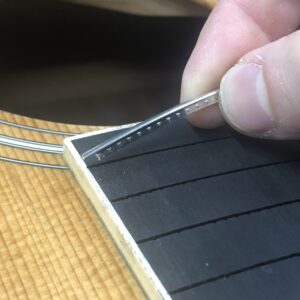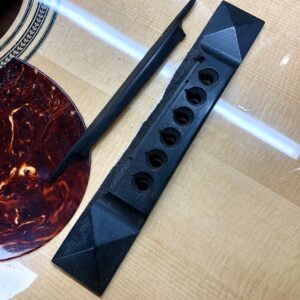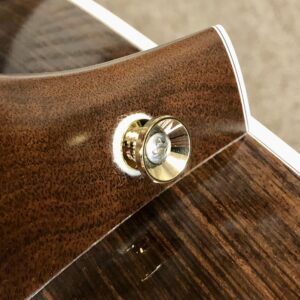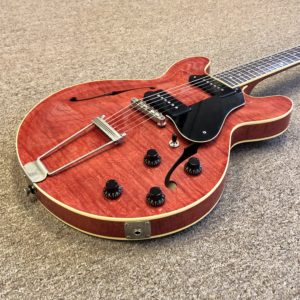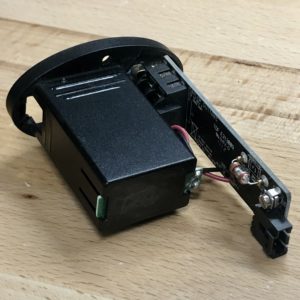Relicing Guitars: Making New Look Old
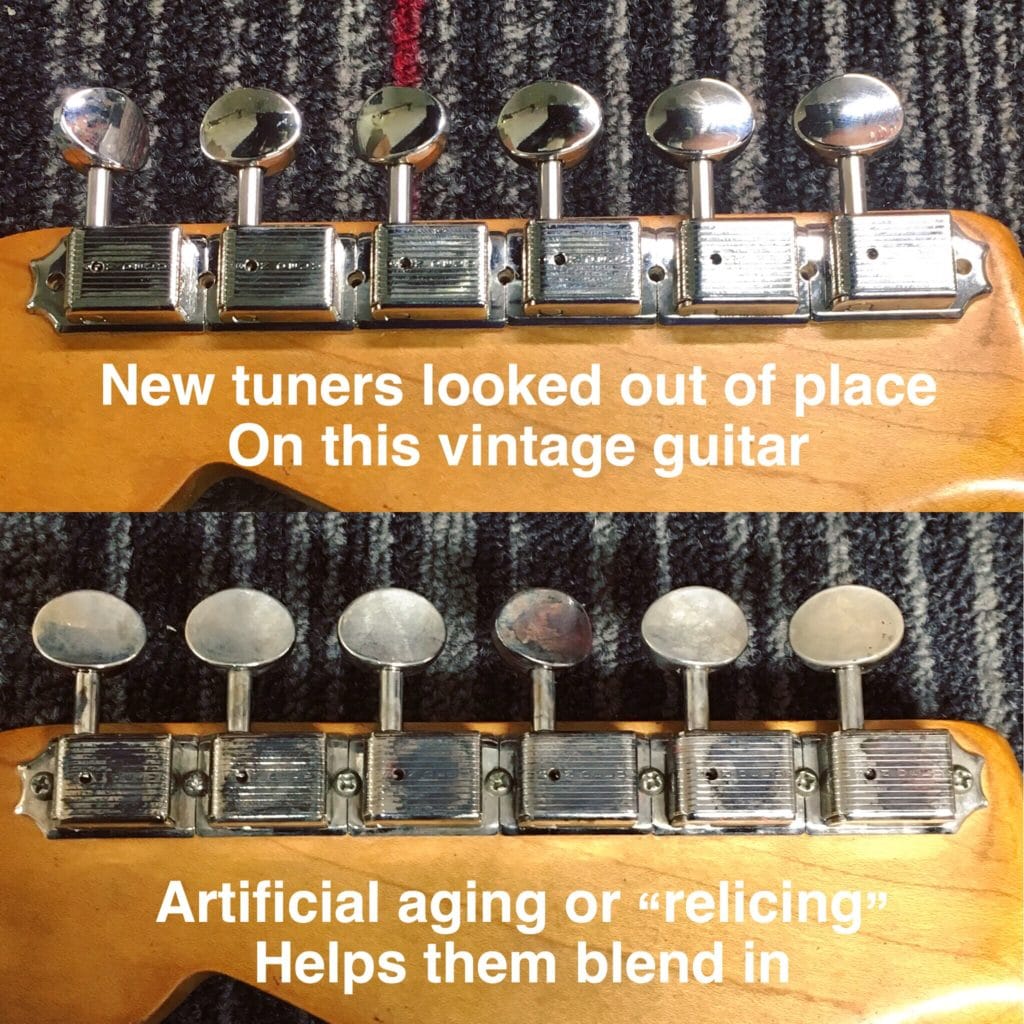
What Is Relicing?
“Relic” is a term used to describe the various processes used to make new parts or instruments look old.
When done properly, the job is far more involved than simply throwing some dirt and haphazard scratches onto a piece and calling it a day.
At its best, it is an art to create a detailed simulation of the aging process by professionals who have studied and documented the aging of vintage guitars.
Why Relic New Guitars or Guitar Parts?
Vintage guitars are coveted for their look and feel as much as for their sound.
In our shop, there are generally two situations in which relicing comes into play.
Matching New Parts To An Old Guitar
In our shop, we have the pleasure of working on vintage instruments with some frequency. For high priced instruments, retaining functional original parts are an important way to maximize the instrument’s potential resale value. However, if they have degraded to a point where the instrument is no longer functioning as designed, we believe that a functional replacement is better than a non-functional original.
On instruments that are not of collector grade, or if the owner wishes to prioritize playability over resale value, they may wish to upgrade items such as bridges and tuning machines for better playability and/or modern performance. When parts must be changed on a naturally aged instrument, it is often aesthetically pleasing to artificially age the new parts in order to more closely match the look of the old. If not, the changed part will stick out like a sore thumb. We wholeheartedly endorse relicing for this purpose.
Making A New Guitar Look Old
Sometimes a client has a modern instrument that they wish had more of a vintage vibe or look. Though we understand this desire, vintage guitars are objectively super cool, it’s not always practical. For starters, many modern polyester guitar finishes do not lend themselves well to aging techniques. Ironically: they were specifically designed to prevent the “unwanted” aging effects of nitrocellulose lacquer. Satin and/or nitro finishes are much more cooperative to aging.
Since we are first and foremost a repair shop, our primary concern is how the instrument plays. If there are any issues with playability, we strongly recommend clients to focus their money and attention on that before worrying about aesthetics. We typically do not accept cosmetic relic work on new instruments in our shop.
How To Relic Guitar Parts?
Clients often don’t realize how much time and effort goes into the process of relicing. Anything done well takes time. For starters, the client must decide how far they want to go. Do you want it to look like a guitar that has been sitting in a case for 50 years, like one that has seen the inside of every honky-tonk and barroom in a 500 mile radius, or something inbetween?
For a full relic, the first step is to disassemble the entire instrument. A variety of different processes are used to age the various components so it is important to have them all separate to avoid inadvertently seriously damaging one part while cosmetically “damaging” another.
Various chemicals may be applied to the hardware such as the bridge, control plates, tuners, etc. in order to age them, while endeavoring to avoid unintended consequences that could come with that aging. For example, acid fumes may be used to age a bridge plate, but to use that same process on the tuners could potentially degrade the gears inside as well, preventing them from working smoothly. Special care must also be taken to avoid the aging process inadvertently leading to stripped screws.
Other common techniques may include but are not limited to: warming then rapidly cooling the finish to promote cracking and checking, drawing in finish checks with an exacto knife, UV light aging, various chemical aging techniques, etc.
How Much Does It Cost To Relic A Guitar?
The costs associated with relicing vary depending on what needs to be done. Relicing individual replacement parts is relatively straight forward and can usually be done for a small upcharge to the cost of their installation. Larger projects such as relicing entire guitars would require several hours effort and would command higher prices.

Erik Salomon - Calico Guitarworks Owner / Head Technician
Tech Talk articles are part of an ongoing effort to provide clear and detailed answers to common questions about guitar maintenance, modifications, and repairs.
While not intended as a step-by-step guide to servicing your own instrument, we hope that you will find value in the information provided.

Great Repairs Start With The Right Parts
Many of the parts mentioned in our blogs are available for purchase at:
GuitarRepairParts.com
Enter the code "TechTalk10" at checkout for 10% off your first order.
About Calico Guitarworks
Calico Guitarworks is the area’s premier destination for fretted musical instrument care and maintenance. Owned and managed by Erik Salomon, the shop is dedicated to providing quick, honest and reliable service. The staff at Calico Guitarworks has a combined 25+ years of professional guitar repair experience. Sharing the knowledge that we accumulate in this focused pursuit is at the core of what we do. Learn more About Calico Guitarworks, explore our Frequently Asked Questions, or Contact us with a specific request.


